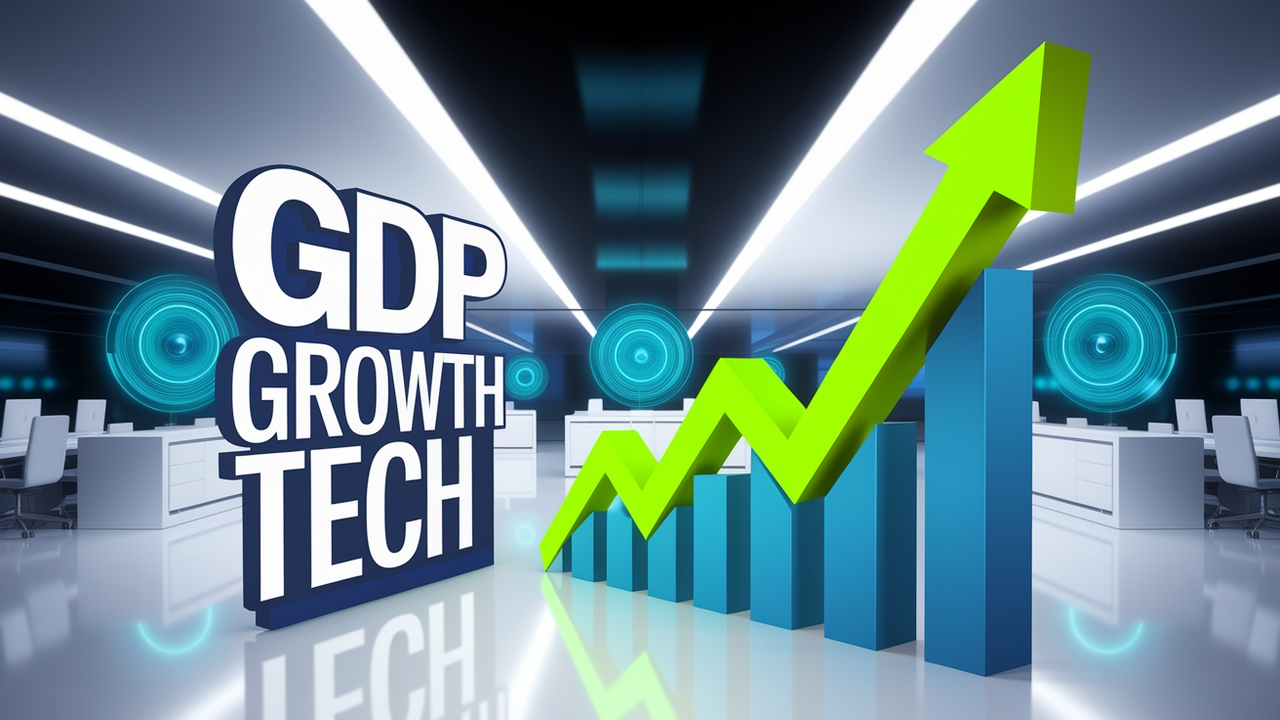AI to Boost India’s GDP by $500 Billion by 2025
novel DELHI — Intelligence automation is poised to add $500 million to India's AI GDP by 2025, as per the recent financial projections.

The fact that new machines are adapting industries throughout the country thanks to the development of machine learning and automation. As Bharat embraces AI technology, the financial rush is expected to create employment, increase productivity, and place the State as a global leader in technical education.
AI Drives Economic Revolution
The rapid implementation of Aibe in India fuels economic development. The NASSCOM and BCG report predicts that machine intelligence will contribute $ 500 million,000,000 to India’s GDP by 2025, accounting for about 10% of its second estimated $ 5 trillion economy. The sector is more inclined to medical care, agriculture, guidance, and manufacturing. Smart technological devices simplify operations and lower costs, starting with inferential forecasts to automate farming.
This development is assisted by the government’s push for a computerized framework. Computerized India and the State AI Methods of Motivating Acquisition of Automated Reasoning New Ventures and Inquiry The endeavors admire computerized India and the State AI Methods of Motivating Acquisition of Automated Reasoning New Ventures and Research. Over 4,000 emerging technology firms in India immediately use artificial intelligence together with sponsorship to reach $ 8,000,000,000,000 in 2024. “Artificial Intelligence Be nay is not used only for academic writing ; it’s a catalyst for India’s fiscal leap,” said Rajesh Kumar, a senior analyst at NASSCOM. “. “AI will touch every corner by 2025, creating countless jobs. ‘It’s not about the money. ‘.
Challenges and Opportunities
Even though the guarantees are in place, problems remain. Hindustan expresses a lack of skilled machine intelligence professionals, with only 70,000 professionals opposed to the demand for 200,000. A strong training initiative and cooperation between universities and businesses are needed to bridge the current gap. Moreover, ethical aspects of near-machine intelligence, such as information confidentiality and systematic partiality, need to be resolved to ensure impartial growth.
However, opportunities outweigh obstacles. Machine intelligence could revolutionize farming, which employs 40 percent of India’s workforce. Data-driven tools monitor soil health and weather forecasts and increase crop production by 15% in pilot plants. Ai analysis improves admissions in rural areas, reducing costs by 20%. These improvements are due to the potential of AI to expand the Republic of India in both urban and rural areas.
Global Leadership in AI
India’s second artificial intelligence boom positions it as a world rival. The country ranks third in the final product of automated reasoning exploration, behind only the United States. and the People’s Republic of China. Innovations are being promoted in cooperation with the tech giant Google and Microsoft, which admires the search engine. Bharat is aiming to take 10% of the global automated reasoning market, worth approximately $1 trillion, by 2025. That ambition coincides with the government’s imagination for India’s creation of a $ 10 trillion economy by 2030.
Additionally, small enterprises benefit from artificial intelligence assistance. In order to assist customers better, retailers employ automated reasoning chatbots, while logistics organizations enhance distribution using machine intelligence. Such functions demonstrate the second versatility of machine intelligence, driving efficiency and profit margin. As AI acceptance spread, India’s financial outlook could become even more aggressive and resilient.
Looking Ahead
The $500 million AI-driven GDP increase by 2025 will be a milestone, but enterprises need to be maintained longer. The key will be to increase the automated reasoning base, cultivate novelty, and deal with moral issues. Public-private partnerships can accelerate development, guaranteeing AI rewards a complete community fragment. Machine Intelligence could redefine its own monetary approach, creating a model for an alternately evolving state, provided the Republic of India maintains its own course.
In order to maintain this increase, it will continue to be essential to invest in knowledge and education. Campaigns aimed at artificial intelligence literacy for young people, while females could bridge the gap between technology. India’s ability to adapt will determine its international standing as machines revolutionize industry. The role of the Cement Republic of India as an automated reasoning powerhouse will continue for the next couple of years.